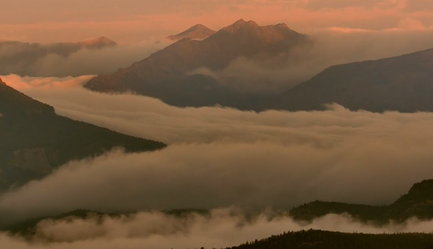Written by John Edward Betancourt  When one thinks of autumn, several things come to mind. There’s the changing of the leaves, the crispness in the air, your favorite drinks return to your favorite coffee house and you start pulling all your jackets and long sleeve shirts to the front of your closet as you anticipate that cold that’s coming. If anything, we have it easy when it comes to autumn, but for wildlife, things are touch more urgent. For with the winter on its way, preparations must be made for animals to survive the cold and it is that sense of urgency that permeated the series finale of BBC America’s brilliant series, Yellowstone. Because ‘Autumn’ was indeed the focus of this final tale and well, we were privy to quite a hurried time in this beautiful park since animals everywhere in Yellowstone work quickly this time of year to teach their babies how to forage to build up their winter bodies so they can deal with the scarcity of food when the air hits forty below and we were also witness to how other animals prepare for the cold by hiding food in the ground itself so they have a meal ready when the snow falls and I was particularly impressed with the story of the Clark Nutcracker, a bird that hides pine nuts all over the park and is able to remember 70% of the locations where it buries its food. Yet, while many animals dig in for the long winter, others know they flat out cannot survive when four feet of snow arrives in the park and they begin a grand migration out of the park to ensure their survival and that’s really what a fair majority of this episode focused upon. Because we were able to follow pronghorns and elk on their way out of Yellowstone, and during this voyage, we came to learn that the pronghorn travel the furthest, nearly a hundred miles or more to find somewhere safe for the winter while elk, end up packing in all kinds of tasks on their journey to greener pastures since mating season is part of their migration as well. However, what made this part of the story so incredibly fascinating, is the sheer fact that once both species arrive at their respective locations, they have to share their safe space, with mankind itself. Because as man continues to stretch its legs and expand, we begin to encroach upon migration grounds that these animals have used for centuries and surprisingly, at least when it comes to the elk, we have found a way to coexist. But sadly, there’s still work to do in order to create equilibrium between mankind and the pronghorn since they tend to roam lands that are rich in natural gas and oil. But, when all is said and done, this was a perfect way to close out this magnificent story. Because everything in Yellowstone bookended perfectly, and we really were able to experience a full year when it comes to life in this park and I loved every single second of it. But alas, our journey around the world by way of ‘One Amazing Summer’ has come to an end on BBC America, for ironically, autumn has arrived in our world as well and well, I cannot thank the network enough for feeding my mind this summer by way of incredible tales of planet earth, and well, they could not have picked a more beautiful part of the world to wrap this series up with and I cannot wait to see what other majestic documentaries BBC America has waiting in the wings for us in the future. Until next time.
0 Comments
Leave a Reply. |
Archives
March 2025
|
|
© 2012-2025, Nerds That Geek LLC.
All Rights Reserved. |
uWeb Hosting by FatCow

 RSS Feed
RSS Feed